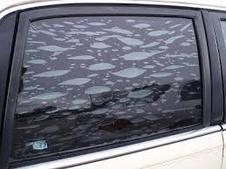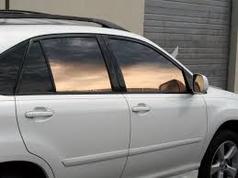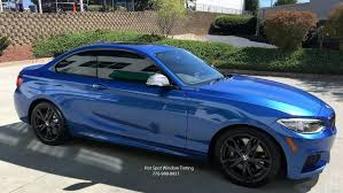Window tints are a thin laminate material that can be installed on the interior and exterior of glass windows in all sorts of vehicles and homes. It is usually made from polyethylene terephthalate. Window tints are generally categorized into four components, (dye, metallic, carbon, and ceramic.) The first tints were done back around the time World War II started, a popular manufacturer was EZ Eye factory tint. Since they were the first real company to manufacture tint films some people at home tried making their own make-shift window tints using a spray which didn't have the same effect. In most cases, it was uneven and hard to keep consistent throughout the window. The first real window tint was invented in 1966.

Window tint film started out as "dye-based" which didn't have good control of the heat within the car interior allowing the car temperature to quickly rise and didn't respond well to the sun's heat, creating bubbles and easily peeling off of the car window.

The next generation of car window tints were metallic window films, created in the nineties. It was a mixture of metallic with dye in the film. These had stronger resistance to shattering however block cellular service yet is still able to resist up to 50% of the heat.

The newest tints of today are ceramic window tints. These tints last, well forever. They are unbelievable with hear rejection and have no interference with electronics. They also have UVA and UVB rejection with less tint to the film allowing more light in while still rejecting the UV rays, if tinted darker the UV rejection is even higher. These tints are constantly exceeding expectations and growing in popularity.
Overall window tints are increasingly growing and have started the new power of vinyl wraps, which has increased in popularity. Window tints will always be in demand due to their scientific and proven benefits and increasing style and common usage.
No comments:
Post a Comment